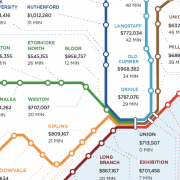At the end of last week, the RBA released a previously confidential report from November that showed the consequences of reducing the cash rate by 100 basis points. The document pointed to a potential 30% increase in property prices over the next three years should borrowers see the low rate as being permanent, and a price increase of 10% should they see it as temporary. While this would help drive the economy through increased wealth and household spending, it could also induce borrowers to bite off more than they can comfortably chew in credit. MPA spoke with Mortgage Choice CEO Susan Mitchell, as well as author of Positively Geared and buyer’s agent Lloyd Edge to examine what a 30% price increase could mean for the property market and the lending industry as it heads towards a credit model of “borrower responsibility.”
Property price versus employment
According to the internal RBA communication, an increase in asset prices is likely on the cards as lower financing costs work to support the supply of credit and contribute to a lower exchange rate. The report said rising asset prices, including those of property, would create an increase in wealth which would invariably lead to an increase in household spending – while an increase in collateral would boost the borrowing capacity of households and businesses.
But according to Edge, this could come at the detriment of first-home buyers.
“I don’t believe that either scenario can point to precisely what increase we will get in house prices but there will be a sustained increase as a result of a permanent rate cut,” he said. “It will continue to push housing prices higher and out of reach for first home buyers, so we will be revisiting the same issues.”
Mitchell agreed that property prices would likely increase as a result of sustained low interest rates, but referenced a recent increase in loan commitments within the first home buyer segment.
“Lower rates are going to mean that property prices will probably increase,” she said. “I guess the question is, what’s the most important thing? Is it allowing some of those property prices to increase but actually stimulating the economy and getting more people employed? I think they’ve (the RBA) decided that employment’s more important.”
On the question of how this would affect housing affordability, Mitchell pointed to record high loan commitments from November, adding that moderation would be key when it came to balancing rising asset prices.
“If it doesn’t get out of control that’s great, and if first home buyers are now able to come into the market when they haven’t really had that opportunity in the past that’s great too,” she said. “It’s really all in moderation that we can let some of the asset prices go up a bit.”
The risk of taking on too much debt
One of the risks attached to rising asset prices in the RBA report was that “borrowers might be induced to take on too much credit if accompanied by looser lending standards and/or optimistic assessments of risk.” When coupled with the treasurer’s proposed relaxation of responsible lending obligations, and an increase in new LVR lending above 85%, Edge believes price increases are likely.
“However, we do run the risk of households getting into more debt and financial trouble due to the looser lending requirements,” he added. “I see banks tightening their own internal systems and checks to avoid having borrowers who cannot afford the loans they want.”
“It’s important to understand that when the treasurer says he wants to pull back on some of the parts of responsible lending, he’s not trying to get rid of oversight of the lending process,” said Mitchell. “APRA still has oversight of the lending process and more than that they’ll also bring the non-banks into that same oversight.
“I still believe that APRA will have a tight rein on the different institutions and I also believe that the banks themselves will look very, very much at their credit and what may happen with some of these asset values, and they will take that into consideration because they want a safe portfolio as well.”
She said that while we won’t know exactly what the reimagined responsible lending obligations will look like until March, one thing is clear.
“It’s getting more and more complicated,” she said. “It’s unprecedented times and I just want our brokers to think very carefully and make sure that they are focusing on all the change happening out there.”
She said it is important for borrowers to reach out for guidance given the complexity of the lending environment – making it all the more crucial that brokers understand each change that happens while understanding how the changes will affect each individual client that comes to them.
Edge said that rising house prices would lead to more work for brokers, adding that “compliance will be more important than ever.”








 Maziar Moini, Broker of Record - Home Leader Realty Inc.
300 Richmond St. W., #300, Toronto, ON M5V-1X2
Maziar Moini, Broker of Record - Home Leader Realty Inc.
300 Richmond St. W., #300, Toronto, ON M5V-1X2



